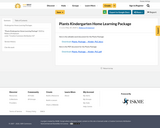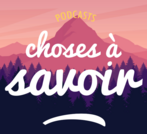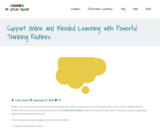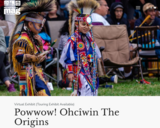
Kindergarten Home Learning Packages
- Subject:
- Arts Education
- English Language Arts
- Health & Fitness
- Health Education
- Math
- Physical Education
- Science
- Social Studies
- Material Type:
- Lesson
- Teaching/Learning Strategy
- Date Added:
- 05/20/2020

Kindergarten Home Learning Packages

This mini unit plan is taken right from Ag in the classroom. Lesson plans and handouts are included. Topics discussed include, food waste, soil science, plant biology, and climate change.

Answer approx 10 questions to see which great Canadian history-maker best mataches your own personality profile.

In this unit, students learn the very basics of navigation, including the different kinds of navigation and their purposes. The concepts of relative and absolute location, latitude, longitude and cardinal directions are explored, as well as the use and principles of maps and a compass. Students discover the history of navigation and learn the importance of math and how it ties into navigational techniques. Understanding how trilateration can determine one's location leads to a lesson on the global positioning system and how to use a GPS receiver. The unit concludes with an overview of orbits and spacecraft trajectories from Earth to other planets.

Podcasting is a powerful way for students to share their voice with the world. Along the way, they learn to communicate, engage in critical thinking, and go through the design process as they ultimately publish their work to an authentic audience.
This site offers 20 creative ideas for podcasts you can do with your students.

Réseau de podcasts de culture générale
«Des podcasts courts et efficaces pour développer vos connaissances au quotidien. ...
Choses à Savoir est un réseau de podcasts de culture générale. 27 podcasts différents pour vous permettre de développer vos connaissances jour après jour.
Créé en 2015 par Louis-guillaume Kan-Lacas, Choses à Savoir rassemble aujourd’hui une équipe de passionnés (journalistes, professeurs, auteurs, scientifiques) bien décidés à partager leur savoir avec le plus grand nombre.
Chacun de nos épisodes est conçu avec en tête les 3 objectifs suivants: clarté, concision, stimulation intellectuelle. Nous en publions plusieurs centaines par mois.
Nous sommes aujourd’hui le réseau de podcasts le plus écouté de France (source ACPM) avec plusieurs millions d’écoutes mensuelles.»

Complete this short quiz with your students to see where they fit on the political spectrum. This can be very useful when conducting mock elections. http://studentvote.ca/ provides excellent materials for this as well.

Much of the focus on modern Japan in U.S. curriculum is on Japan's role in World War II and/or on its status as an economic superpower by the 1980s. The steps along Japan's path from a defeated aggressor nation to a peace-oriented, prosperous power are less-noted, but essential for explaining Japan's transformation and the U.S.'s role in that process. One primary source activity in this cluster focuses on Japan's postwar identity as a "peace state," and how that identity was a product of Article 9 of the new Constitution created by Americans under General MacArthur. Japan's pacifism was undergirded by a strong U.S. military presence in Okinawa, a presence now increasingly challenged by Okinawans and other Japanese. The second activity uses photographs to explore the April 2010 Okinawan protests against the U.S. base at Futenma. A final source, the animated cartoon Sazae-san, looks at an aspect of Japanese cultural identity influenced by the U.S., specifically the Japanese celebration of Christmas in the postwar years. How the Japanese have thought about these changes Đ embracing certain roles and practices while questioning or rejecting others Đ is a main theme of this group of documents.

While politics is generally seen as the domain of a civics class (and Craig did a great job of teaching US Government & Politics elsewhere on this channel!) it’s something that sociology is interested in too. Today we’re looking at the sociological approach to politics, different types of authority and political systems, and different sociological theories of power.

Poppa buys himself some new pants that need hemming. The women of his family are too tired to hem the pants before church the following morning. During the night, ghosts rally the women in the family each remove material from the pants so that the pants are ultimately too short for Papa.

We’re continuing our unit on health with a discussion of some of the indicators that help us measure health for different populations. We’ll also explore three contributors to health disparities: individual factors like genetics, physical factors like pollution, and social factors like stress.

In which John Green teaches you about population. So, how many people can reasonably live on the Earth? Thomas Malthus got it totally wrong in the 19th century, but for some reason, he keeps coming up when we talk about population. In 1800, the human population of the Earth passed 1 billion, and Thomas Malthus posited that growth had hit its ceiling, and the population would level off and stop growing. He was totally right. Just kidding, he was totally wrong! There are like 7 billion people on the planet now! John will teach a little about how Malthus made his calculations, and explain how Malthus came up with the wrong answer. As is often the case, it has to do with making projections based on faulty assumptions. Man, people do that a lot.

This site features Louisa May Alcott and Samuel Clemens. See excerpts from Alcott's girlhood journal and Little Women. Read Clemens' explanation of his white suit in Mark Twain's Autobiography and the last chapter of Tom Sawyer, where Huck Finn has fled the Widow Douglas's civilizing influence. Help students see that their own lives and views can be a basis for creative writing.

Students use their knowledge of scales and areas to determine the best locations in Alabraska for the underground caverns. They cut out rectangular paper pieces to represent caverns to scale with the maps and place the cut-outs on the maps to determine feasible locations.

This is a variety of ideas for ways students can share their learning.

Where did the stars come from? What makes lightning and thunder? Pourquoi tales are narratives developed by various cultures around the world to explain natural phenomena. Students study three tales and learn about their cultures of origin, then work cooperatively to write and present an original pourquoi tale.

This is a great project to do later in the year once students have practiced independent research skills. Students are put into groups, and assigned a "big idea" form the power and authority strand to research and present to the class.

Project Zero at Harvard’s Graduate School of Education has created a collection of Core Thinking Routines as part of their Visible Thinking Project. Teachers can view the entire collection on the Project Zero website (https://pz.harvard.edu/thinking-routines#CoreThinkingRoutines), where each routine is described in detail (e.g., purpose, application, launch) in both English and Spanish.
These routines encourage students to be intentional thinkers.
What do they know or notice?
What is their perspective or position on an issue or idea?
How can they support their position or thinking?
What do they wonder? What are they confused about?
How has their thinking changed? What caused that change?

Moviemaking has never been easier than it is at PowToon.
To create a short animated clip, all you have to do is write a script and choose characters and other graphics using a simple drag-and-drop tool. The classroom possibilities are endless.

Virtual Exhibit (Touring Exhibit Available)
Powwow! Ohcîwin The Origins
Oh-cÎ-win:
Ooo-chi-win, Cree
1. “The Origin” or telling of a story of where something originated
Powwows are Indigenous cultural celebrations where many forms of dance styles are performed as part of the ceremony. These social gatherings, held across North America, bring people together to sing, dance and share teachings all while celebrating Indigenous culture. Each dance style has a meaning or origin story and a specific purpose. Regalia, the distinctive clothing and ornamentation worn by the dancers, corresponds to the different dance styles.
Powwow! OchÎwin the Origins was created by Patrick and Marrisa Mitsuing of Powwow Times. Working with a diverse team of Indigenous Artists they assembled each of the individual dance regalia on display. During the 2019 and 2020 Powwow season, they met with knowledge keepers across North America to record the origin stories of the dances they perform.
The dances are: Men’s Traditional, Men’s Fancy, Men’s Chicken, Men’s Grass, Women’s Traditional, Women’s Fancy and Women’s Jingle.